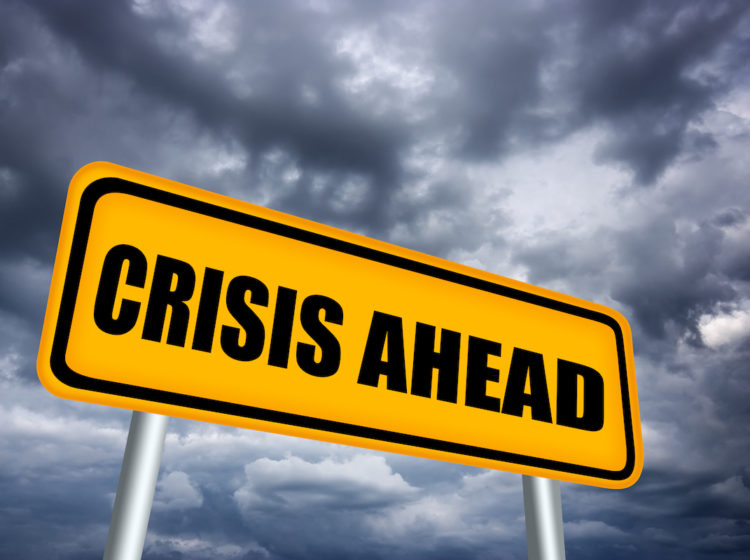Customer loyalty is one of the most important aspects of running a successful business. According to Larry Myler, the founder and CEO of By Monday Inc. a consulting firm for B2B sales “a long-term customer is of more value than a single-deal customer, and it’s a lot less expensive to keep a current customer than to acquire a new one.”
A smart marketing strategy not only acknowledges the loyalty of its returning customers, but it also prolongs the life cycle of the business-to-customer relationship. Organizing a system that rewards faithful customers may seem like a bit of a challenge. But with careful thought and heartfelt planning, both of you can benefit from the relationship a loyalty program offers.
[Learn 10 Ways To Promote Excellent Customer Service]
Nick Mavrick, vice president, global strategy & marketing for Volvo Rents, a construction and industrial equipment rental chain states: “As a customer, you want to know you are special. Maybe you don’t want to pay shipping charges. Or you need to have your big delivery on a Sunday morning. Bending over backward for your best customers — that’s what loyalty marketing is all about.”
Get to Know Your Customer
The first step in any meaningful relationship is taking time to learn about someone. If you don’t already know your customers in depth, take time now. You can use the information you gather on your clientele to build a loyalty program that caters to their needs and desires. Collect as much data as possible on your buyers with the tools you have available.
Here are some ways to learn about your customers in depth:
- Gather all contact information on them.
- Ask questions when talking to them on the phone.
- Keep track of purchase history.
- Determine what pages on your site customers visit the most.
- Determine which pages on your site they linger the most.
- Find out how they discovered your business.
- If referred, ask who referred them and why.
- Interact with them on social media.
- Conduct a survey via email or social media.
- Ask for feedback or send a survey requesting a satisfaction rating.
Segment Your Customers
After learning about your customers, it’s time to divide them into various groups for targeted marketing.
According to Reid Carr from Red Door Interactive, customers are diversified. He encourages marketing experts to “identify what key factor(s) set one apart from another and segment your users from one another. It could be geography; it could be specific products they buy or it could be a demographic detail.”
As you categorize your customers, keep in mind some may fit into more than one group. For example, you may put Mr. Stanfield in a group of long-time customers, but also place him in other groups that fit his specific demographics and interests.
As you learn more about your customer, you will be able to develop a more meaningful loyalty experience for them.
Name Your Customer Loyalty Program
Develop an exciting, clever or humorous title for your program. For example, The Clean Authority calls their program MyTCA Rewards which reflects their name, but gives it the personal touch by adding “My” to the title. However, you can take it a step further and add more interest by following the guidelines presented by Alex McEachern at Smile.io.
-
Touch an emotion
McEahern emphasizes that, to your customers, loyalty is an emotion. Use this to engage your customer on a deeper level. Choose a positive, happy sentiment that best reflects what you sell. For example, if your company is construction-based, you may choose an emotion reflecting strength or confidence. A home healthcare business may want to reflect compassion. Decide what emotion you want to invoke in customers when they think of your brand. Then weave that feeling into your program title.
McEachern also believes that inserting a word in the program title that makes the customer feel a part is an alluring addition. He presents a few examples, such as D’Addario’s Players Circle and GONGSHOW’s Gonger Nation Rewards Club. Notice how the words “circle” and “club” make you feel like you’re a part of something exclusive.
-
Avoid using the term “points”
Develop a catchy term apart from “points.” For example, a landscaping business could have clients collect “blooming bucks.” Or a housecleaning company could offer “diamonds.” Another example is Hallmark’s use of the term “Crown Points.” Develop a value system that adequately reflects your business personality.
Decide the reward
In Lindsay Kolowich’s article, A Successful Loyalty Program, she emphasizes that, “The key to a successful loyalty program is offering actual value to your customers.”
The rewards that make the best sense are those related directly to your product or service. Here are a few examples.
-
VIP products or services not available to others
Offer exclusive products or services to those who reach their rewards goal. For example, a housecleaning company can offer a cleaning service such as window washing or an exclusive product, such as an organizing kit for a closet or cupboard.
-
Discounted or free products or services
This is the most common and you already know your customers value your products or services because they are using them. They will feel appreciated with free or discounted services. Or even by waving additional costs, such as shipping and handling.
However, keep this in mind. According to Tom Donnelly, “ … discounts don’t have a lasting impact on customers’ memories. Physical prizes or earned bonuses like frequent flyer trips resonate much more.” So you may want to consider some unique ideas with a long-lasting impact.
-
Give away free digital products
Write a white paper or find a free e-book that would benefit your customer and offer it as a free download. You may also work out partnerships with software companies to offer free downloads. For example, perhaps you could offer home management, budgeting or garden planning software. Determine what would be of most value to your customers. Also consider working with an author or publisher to offer a book.
Choose Your Program
There are a few different types of loyalty program templates to consider.
-
Point Based System
Perhaps the most common, the point system rewards customers for purchases or actions. You can assign dollar amounts to points, such as $1 per point, or $1 per 100 points. You can award points for actions as well, such as participating in a survey, joining or contributing to your social media, or even something like turning in empty canisters to you for recycling.
-
Tier Based System
Somewhat similar to the points system, but members are given the option to bump up levels through accumulating points or paying a fee. Customers begin at a minimal rewards level and can obtain higher levels as they progress.
According to the creators of Loyalty Box, a loyalty program software, “Programs like these give customers something in the beginning then offer scalable value as they progress. The top level rewards are enviable and the bottom ones are minimal but still useful to a wider demographic. After continued patronage, being a long-term customer for a brand can feel like a reward unto itself.”
-
Community-Based System
Some marketers have connected with community organizations to offer rewards outside of their own business. With this program, customers use their membership to receive discounts or join local organizations of interest, such as a fitness center.
Another option for this program is customers can receive rewards while participating in particular events in their community, such as fitness challenges or health screenings. Members can utilize apps and social media to prove their participation by checking in or recording activity.
If you want, you can mix and match any of these, but remember to keep it simple. Make it easy for the customer to sign up and easy to understand. Give your clientele a clear goal and an understanding what the reward options are at the end. You also want to make it easy for your company to implement and track.
Market Your Customer Loyalty Program
Market your program everywhere possible and make it easy for customers to sign up. Always add a direct sign-up link. Here are a few ideas.
- Make sure your rewards program is highlighted on your home page
- Provide a link from your website pages to the page that outlines the details of the program
- Make sure your check-out page also has information about the program, or at least a teaser with link to it.
- Highlight the program, with a link for sign-up, to your social media
- Add a teaser with a link to every email you send out.
- Make sure you at least add a teaser and link in every email marketing campaign
Show your customers what they mean to you. Get to know them, interact with them and reward them. A well thought-out loyalty program will show them they are appreciated and will, no doubt, entice others into the inner circle.
Have you implemented a loyalty program? Please share your experience.
Author: Cindy Lynn Sawyer
Cindy specializes in writing features, how-to articles and informative pieces on topics of interest to entrepreneurs and homeowners. She owns and operates her own company, Capitol Hardware, LLC, with her husband. As an experienced business owner, she has developed expertise in various areas of entrepreneurship, but emphasizes, “There’s always something new to learn.”





3 comments